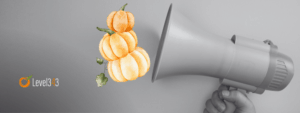According to the American Marketing Association, marketing is “… the activity, set of institutions, and processes for creating, communicating, delivering, and exchanging offerings that have value for customers, clients, partners, and society at large.” -But have you ever wondered why marketing works on you, the marketer?
As a marketing professional, you may think that you’re immune to these processes. You’ve seen them all before. Most likely, you use them in your work every day. You’re like a magician sitting in the audience of a magic show. You know how this or that trick is performed and you’re not impressed.
However, marketing, when it’s done well, will work on any audience, even the most jaded of marketers.
It’s all about the psychology of the game.
Marketing Psychology 101
No matter how niche your market, you’re still going to have to combat the competition to win your share. Unless you’re going to completely reinvent the wheel, this involves persuasion. You need to convince your audience that even if you offer the same product or service, you do it better, faster, cheaper, or with more panache.
Marketing psychology is the practice of understanding what drives consumers to make a purchase and using that insight to make an appeal that affects them on an emotional level. Even B2B clients will respond if you convince them that doing business with you will improve their business and make it more profitable.
Who doesn’t respond to the prospect of a better quality of life and more money, right? Even data-driven, detached marketers have feelings, wishes, and needs.
You don’t need a degree in psychology to understand human nature and leverage the things that make people tick. Marketing psychology and employing psychological principles involves education, experience, and empathy.
Here are some tactics that will work on almost any potential customer.
Use Your Words
As a writer, I understand the power of word choice on an audience. You can say basically the same thing with different words and evoke a totally different tone or emotion with each choice. What associations come to mind when you imagine a sultry night as opposed to one that’s hot and sticky or just humid?
It’s a proven fact that certain words will capture a customer’s attention. The most basic are “free” or “discount”. Everyone loves a bargain.
With thoughtful word choice that conveys the exact emotion you want to inspire, you could sell ice in Arctic regions.
Understand the Impact of a Powerful Image
They say that a picture is worth a thousand words. It’s a cliché, but some phrases have staying power because they’re rooted in fact. Most people are visual learners. When words fail, a powerful image can affect us on a deeper, emotional level.
Sometimes, the wrong image will impact our lead generation adversely. One client of mine couldn’t figure out why the website for her cosmetic dental practice wasn’t drawing more consultation requests. The layout was clean, the CTAs well-placed and actionable, and all of her services were listed and explained in carefully crafted, SEO optimized copy.
It turns out that the stock photos of print models with perfect pearly whites weren’t connecting with the customers. The simple act of replacing these with before and after images of actual patients resulted in an immediate 30 percent increase in conversions.
Draw customers in with impactful images that appeal to their emotions or pique their interest.
Leverage Innate Impulsivity
How many times have you been in line at a store and just had to buy something that was right there at the counter? It probably wasn’t even something you needed, but you sure did want it in the moment. Candy and snacks are a good example.
One fact of human nature is that we often act on impulse. We don’t know why we bought that snack-size bag of turkey jerky, we just know that we had to have it right then. Store owners know this and place certain appealing items at eye level for easy viewing – and subtle influence – while we’re waiting in line.
Most of us don’t have psychical storefronts, but we can leverage that same impulsive nature through activities like “Buy it Now” buttons on our website or inserting a flash sale in an email.
Learn What Drives Decision-Making
Customers are driven by emotion more often than logic. Start by understanding your audience and determining how your product or service will impact their life. For example, someone who is looking for home repairs is often driven by frustration or lack of time. Individuals with a headache or bad tooth are driven by pain.
Once you understand what your audience wants, prime them for a conversion with wording, images, and other tactics that reinforce your ability to provide solutions.
Don’t Underestimate Color Psychology
If you’re looking for a more subtle means of persuasion, consider color choice. It’s proven that certain colors have an influence on our moods and behaviors. You’ll notice that restaurants have a lot of red in their décor because it has been proven that red increases your appetite and blue makes people want to eat less.
Certain hues or tones of color affect us as well. Pale blue or green are soothing, but electric blue is energizing. Lighter shades of pink or peach evoke feelings of health and well-being while hot pink is cutesy and more youthful.
Consider the image or emotions you want associated with your brand and use corresponding colors in your web design, packaging, and logo.
Position the Customer for a Win
Most of us feel bad when we have to say no. Feeling bad leads to an overall negative mindset that makes it harder to say yes when it would benefit us the most.
Position your customers for a win by putting them in a position to say yes right from the beginning. By doing so, you inspire feelings of comradery and make emotional connections. This is done by leading them though small steps that put them in a positive mindset. For example, getting them to watch a short video or try a free sample of your product will create forward momentum that can be converted to a sale.
Utilize the Power of Reciprocity
“What’s in it for me?” That’s a common question, and it’s up to you to provide an acceptable answer. People are driven by the power of reciprocity. They want to know that they’ll be rewarded for their efforts. In addition to excellent customer service, give your customers a little added incentive in the form of a free gift with purchase or a discount for referring a friend.
Final Thoughts
In the end, marketers are people, too. We carry the same biases and want the same things. Effective marketing strategies work on us for the same reasons they work on the average consumer. They address our pain points and offer to improve our quality of life in some way.
If you’re looking to create a marketing strategy that’s so strong it can even influence a marketing professional, Level343 can help.



































